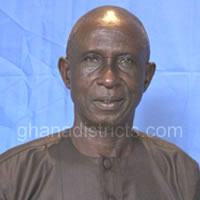Location & Size
Berekum Municipal came into existence as a semiautonomous spatial unit by virtue of the decentralization policy adopted by the Government in 1988.
Geographically, the Municipality can be located in the Western part of Ghana in the Brong-Ahafo Region. It lies between latitude 7’15’ South and 8.00’ North and longitudes 2’25’ East and 2’50’ West.
The Municipality shares boundaries with Wenchi Municipal and Jaman District to the Northeast and Northwest respectively, Dormaa Municipal to the South and Sunyani District to the East.
Berekum, the Municipal capital is 32km and 437km North West of Sunyani, its regional capital and Accra, the national capital respectively. Its total area constitutes about 0.7 percent of the entire 233, 588km² of Ghana, (1,635km²).The Municipality is close proximity to Cote d’ Ivoire is another remarkable feature which promotes economic and commercial activities between the District and Cote d’ Ivoire.
Topology &Drainage
Unlike parts of the country, the topographical attributes of Berekum indicate a fairly flat land with remarkable variations in height. An undulating landform can be found in the south interspersed with a few isolated low hills to the North and Northeast.
Climate & Vegetation
Berekum Municipal lies in the semi-equatorial climatic zone, which occurs widely in the tropics. Abundant sunshine and rainfall yields a warm and humid weather.
Patches of roofed savannah are found in the northern parts of the district. Notably, Domfete and Abi off the Berekum-Sampa road.
Basically, the semi-deciduous forest is the dominant vegetation type, occupying about 80 per cent of the entire middle stretch of the land. With isolated patches of wooded savanna in the Northern-most and with eastern corner of the district.
Geology &Soil
Underlying the Municipality is a metamorphic rock, which has undergone several thermodynamic changes in the mineral composition and structure. Upper and Lower Brimin rocks are the most predominant geological formation composed of phyllite, schist, tuff and greyrocks. Soils of the district are mostly forest ochrosols, well-drained soils in the weathering products of intermediate or moderately acidic rocks. The ochrosol soil is the most important soil in the forest zone of Ghana.
During the dry season there is a gradual increase in the level of nitrate and a more rapid increase as soon as the rain begins.Crops grown in the Municipality rice, maize, plantain, oil palm, coffee, cassava, yam and others. The soil has also served as the platform on which all development activities take place.
Decades of continuous cropping, incessant logging and widespread bushfires has led to deterioration in soil fertility leading to reduced average farmer productivity.
Date Created : 11/29/2017 1:49:51 AM





 facebook
facebook twitter
twitter Youtube
Youtube TOLL FREE 0800 430 430
TOLL FREE 0800 430 430 +233 593 831 280
+233 593 831 280 GPS: GE-231-4383
GPS: GE-231-4383 info@ghanadistricts.com
info@ghanadistricts.com Box GP1044, Accra, Ghana
Box GP1044, Accra, Ghana